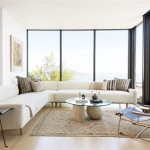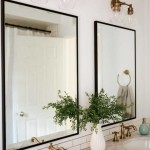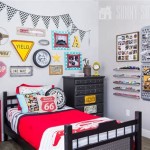How Do I Decorate My Room?
Decorating a room can feel overwhelming, but a systematic approach simplifies the process. This guide offers a structured framework for transforming a space into a personalized haven, covering essential aspects from planning and budgeting to styling and finishing touches.
Planning and Budgeting: The foundation of any successful decorating project lies in thorough planning. Start by defining the room's purpose. Is it a bedroom for relaxation, a living room for entertaining, or a home office for productivity? Once the function is clear, establish a realistic budget. This prevents overspending and helps prioritize purchases. Consider elements like furniture, paint, décor, and lighting, allocating funds appropriately.
Choosing a Style: Identifying a preferred aesthetic is crucial for creating a cohesive look. Research different interior design styles like minimalist, bohemian, traditional, or contemporary. Browse magazines, online platforms like Pinterest and Instagram, or visit furniture showrooms for inspiration. Collect images that resonate to develop a clear vision for the room's overall style.
Color Palette Selection: The color palette sets the mood and atmosphere of the room. Consider the room's size, lighting, and desired ambiance. Lighter colors can make a small room feel larger, while darker colors create a cozy, intimate atmosphere. Use a color wheel to explore complementary, analogous, or triadic color schemes for a balanced and visually appealing result. Test paint samples on the walls before committing to a final color to see how they look in different lighting conditions.
Furniture Selection and Arrangement: Furniture is a major investment, both financially and aesthetically. Measure the room carefully to ensure furniture fits comfortably and allows for easy movement. Prioritize functionality and comfort while staying true to the chosen style. Consider the scale and proportion of furniture pieces relative to the room's size. Experiment with different furniture arrangements to optimize flow and create a balanced layout.
Lighting Considerations: Lighting plays a vital role in enhancing the room's ambiance and functionality. Incorporate a layered lighting approach, combining ambient, task, and accent lighting. Ambient lighting provides general illumination, while task lighting focuses on specific areas for activities like reading or working. Accent lighting highlights architectural features or artwork, adding depth and visual interest. Consider natural light sources and incorporate window treatments like curtains or blinds to control light levels.
Textiles and Soft Furnishings: Textiles introduce texture, color, and pattern into the room. Choose rugs, curtains, cushions, and throws that complement the overall style and color palette. Consider the texture and material of the fabrics, opting for natural fibers like cotton, linen, or wool for a breathable and comfortable feel. Use rugs to define different areas within the room and add warmth underfoot.
Wall Decor and Artwork: Wall décor adds personality and visual interest to the space. Select artwork, photographs, or decorative mirrors that reflect personal interests and complement the room's style. Consider the scale and placement of artwork, ensuring it is proportionate to the wall size and furniture arrangement. Create gallery walls for a curated look or use a single statement piece to draw attention to a focal point.
Accessorizing and Personal Touches: Accessories are the finishing touches that bring the room to life. Incorporate decorative objects, plants, books, and personal mementos that reflect individual interests and create a sense of personality. Use trays or baskets to organize small items and add visual appeal. Don't overcrowd surfaces; allow for negative space to prevent a cluttered look.
Storage Solutions: Incorporating practical storage solutions is essential for maintaining a clutter-free and organized space. Utilize shelves, drawers, baskets, and storage ottomans to keep belongings tidy and out of sight. Choose storage solutions that blend seamlessly with the room's décor and maximize vertical space for optimal storage capacity.
Regular Updates and Refreshments: Decorating is an ongoing process. Regularly assess the room and make adjustments as needed. Switch out cushions, throws, or artwork to refresh the look and incorporate seasonal décor. This allows for flexibility and keeps the space feeling vibrant and evolving.
Seeking Professional Advice: If feeling overwhelmed or unsure about design choices, consider consulting with an interior design professional. They can offer personalized guidance and expertise, helping create a cohesive and aesthetically pleasing space that meets individual needs and preferences. They can also assist with space planning, color selection, and furniture sourcing.
Sustainability Considerations: Incorporate sustainable practices into the decorating process by choosing eco-friendly materials and furniture. Opt for recycled or reclaimed materials, sustainably sourced wood, and low-VOC paints. Consider energy-efficient lighting options and prioritize durability and longevity when selecting furniture and décor to minimize environmental impact.

Temporary Decorating Tricks Every Girl Should Know Teen Vogue
What Are Some Cool Ideas For Decorating My Room Quora

How To Decorate Your Uni Room On A Budget 31 Ideas Aparto

How Should I Decorate My Bedroom Colorado Style Home Furnishings
Decorating My Dream Room For

Pin On Interior Design
I Have A Huge Blank Wall In My Living Room How Can Decorate It Easily Quora

Kid S Room Interior Design Top 10 Tips To Decorate My Kids

Decorate My New Room With Me Moving Ep 3 Nicole Laeno

Pin On Al House







